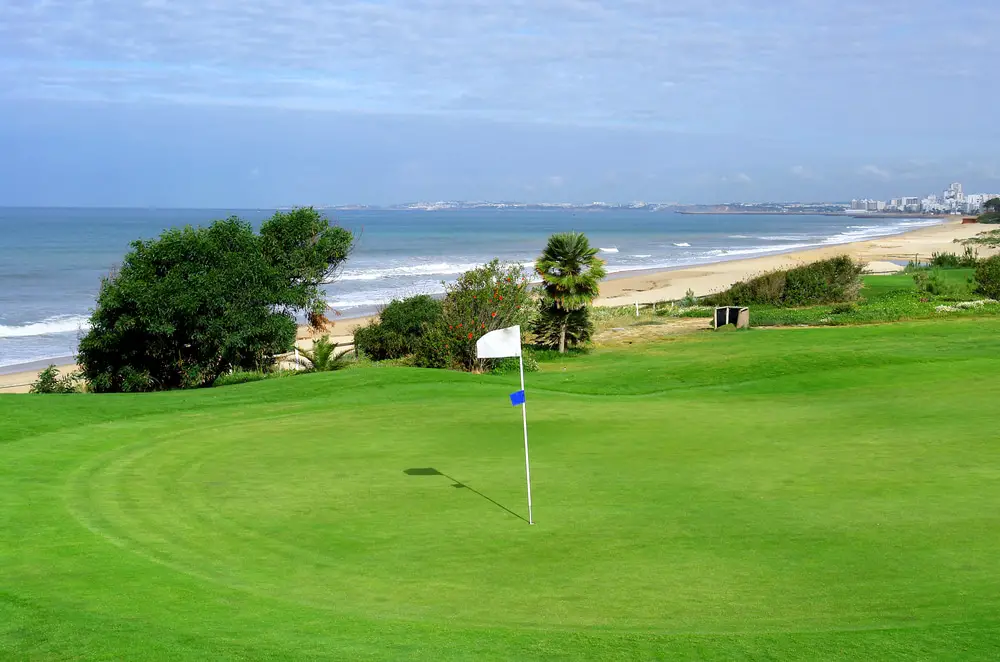Last Updated on June 8, 2023
Golf is a sport that has long been associated with prestige, wealth and luxury. But how much is a golf course worth? It is no surprise to learn that the cost of a golf course can vary significantly depending on its location, size and amenities. This article seeks to explore this issue in detail by examining factors which affect the value of a golf course, as well as offering an overview of current market trends. By discussing these issues further, readers will gain valuable insight into how much they should expect to pay for their own golf courses.
Factors Influencing the Value of a Golf Course
The value of a golf course is determined by many factors, primarily the location and design. The geographic area in which a golf course is located can have an effect on its worth. Areas with strong real estate values may be more attractive to potential buyers than those that are less desirable. Additionally, the physical layout of the course can also influence its value. If it has been well maintained and includes challenging elements such as water hazards or bunkers, this could add additional value from a recreational standpoint. On the other hand, if there are no distinguishing features, or if the maintenance of the course has declined over time, this could negatively impact its marketability and thus reduce its worth. Ultimately, these two considerations – location and design – will affect how much a golf course is valued at in any given market.
Professional Evaluation of a Golf Course
Professional evaluation of a golf course is essential in determining its value. An appraisal or assessment made by an accredited and certified golf course appraiser will provide the accurate valuation necessary to help make informed decisions regarding the sale, purchase, development, or refinancing of a golf property. The appraiser’s qualifications must include experience with commercial real estate transactions and knowledge of the local market conditions that may impact the worth of a particular land parcel or golf course asset.
The primary goal of any golf-course appraisal is to determine the fair market value, which requires analysis of comparable properties as well as research into potential uses for the land other than its current use as a golf facility. Factors such as access roads, drainage issues, zoning regulations, soil types, and infrastructure improvements should all be taken into consideration when assessing a property’s value. The appraiser should also evaluate financial statements from previous years in order to assess trends related to maintenance costs and revenue sources associated with operating a successful golf club.
Market Analysis for Selling or Buying a Golf Course

When considering selling or buying a golf course, it is important to analyse the market. Such an analysis should consider several factors, including:
- The economic climate of the area
- The current supply and demand for golf courses in the area
- The quality of services provided by competing golf courses
- Development prospects that could affect the future value of the property
- Any other local advantages, such as proximity to metropolitan areas.
By taking these into account, one can get a better idea of how much a particular golf course is worth and whether it would be beneficial to buy or sell. For example, if there are few competitors with high levels of service, this may indicate a potential for higher profits than if there were many competitors providing similar services. Moreover, understanding local development plans can help buyers determine whether their purchase will appreciate in value over time due to increased investment from nearby cities or businesses. Ultimately, conducting research on these aspects allows interested parties to make informed decisions when evaluating offers for either purchasing or selling a golf course.
Tax Implications When Selling or Buying a Golf Course
Tax considerations can be a major factor when deciding whether to purchase or sell a golf course. Depending on the situation, there will be different types of taxes that must be taken into account. This section provides an overview of some of the most important tax implications associated with selling and buying golf courses.
| Type of Tax | Selling Golf Course | Buying Golf Course |
|---|---|---|
| Capital Gains Tax | Potential capital gains may apply if the owner has owned the course for more than one year before selling it. These gains are taxed at various rates depending upon individual circumstances. | A buyer would not generally incur any capital gains taxes as they buy the course from another party; however, this could change based on certain circumstances. |
| Income Taxes | Any profits made from the sale of a golf course may be subject to income taxes, though these can vary significantly between individuals and their personal situations. | When purchasing a golf course, buyers should also consider additional costs, such as property transfer taxes, which can be significant in some areas. Additionally, buyers may have to pay sales tax if applicable in their state or locality. |
| Gift/ Inheritance Taxes | If someone gifts or inherits a golf course, then gift/inheritance taxes may need to be considered in addition to other factors, including potential estate planning opportunities related to ownership structure and financing arrangements. | Buyers who receive a gifted or inherited golf course won’t necessarily face any immediate taxation unless they choose to make changes to its ownership structure or finance arrangements after acquisition. |
It is essential for anyone interested in either buying or selling a golf course to understand how local laws affect them specifically and plan accordingly in order to minimise possible taxation liabilities over time. Furthermore, seeking professional advice from experienced accountants and attorneys is highly recommended when dealing with complex tax issues relating to golf courses.
Long-Term Maintenance Costs for Established Courses

Golf course maintenance is essential in order to keep the layout of a golf course desirable and playable. Course upkeep costs vary depending on location, size, and overall conditions of the course. Established courses may require additional long-term maintenance due to their age and previous usage. Regular maintenance costs include mowing grass, fertilising turfgrass, aerating greens, controlling weeds and pests, and repairing bunkers or hazards. These duties need to be completed at regular intervals throughout the season in order to maintain optimal playing conditions for members. Additionally, established courses often require more frequent repairs, such as replacing dead trees or damaged irrigation systems. The cost of these larger projects can be significantly higher than the regular maintenance costs but are necessary for ensuring that the course remains safe and enjoyable for all players. Overall, establishing an accurate budget for maintaining an existing golf course requires careful consideration of both short-term and long-term expenses associated with its upkeep.
Cost/Benefit Analysis of Owning a Golf Course
In order to make an informed decision about the potential cost and benefit of owning a golf course, it is important to analyse the short-term and long-term costs associated with maintaining the property. Cost/benefit analysis can be used as a tool to assess whether purchasing a golf course will be beneficial or detrimental in both economical and practical terms.
- Assess startup costs for construction and installation of new features
- Analyse maintenance costs related to managing turf health, irrigation systems, etc.
- Understand current market prices for similar courses
- Evaluate operational expenses such as staff salaries, equipment purchases, marketing costs, etc.
- Consider other factors like taxes and insurance premiums
Once these items are taken into account and weighed against possible revenue generated from the sale of memberships, green fees, merchandise sales, lessons, tournaments and more, prospective owners can determine if they would benefit financially by investing in a golf course. It is also important to consider non-financial benefits that may accompany owning a golf course, such as job satisfaction or contributing positively to one’s local community. Ultimately weighing these pros and cons will help owners decide if taking on the responsibility of running a successful golf operation is worth their while.
Frequently Asked Questions
How Much Does It Cost to Build a Golf Course?
The majority of expenses associated with constructing a golf course come from three main areas: purchasing land, soil preparation and landscaping, and installation of irrigation systems and other amenities. Land acquisition can be one of the most expensive parts of creating a golf course, depending on its size and location. In addition to this expense, large amounts are spent on labour-intensive processes like soil preparation and grading that require heavy machinery or human power. Lastly, installing an irrigation system along with other features, such as cart paths or clubhouses, will incur additional expenditure.
- Costs vary based on the desired complexity
- Building may include earth-moving machinery & seed expenses
- Land purchase depends upon size & location
In order to get an accurate estimate of how much money must be invested into building a golf course, consulting experts in construction management or landscape architecture would be advised.
What Is the Average Life Expectancy of a Golf Course?
Golf courses require regular upkeep in order to stay open and continue being played. This includes mowing fairways and greens, aerating soil and grasses, managing water levels, repairing bunkers and other features, as well as addressing issues with drainage systems. Without these essential tasks being completed regularly by professional staff members or volunteers, a golf course will eventually succumb to damage from wear-and-tear or natural disasters like floods or storms. Additionally, environmental conditions that are too extreme or unfavourable can also drastically shorten the longevity of a golf course if not addressed properly.
Under ideal circumstances where proper maintenance is carried out routinely over an extended period of time, there is potential for a single golf course to last up to 100 years before needing substantial renovation efforts. In some cases, though, certain courses may need refurbishment after 40 or 50 years due to multiple rounds of play causing excessive strain on the land itself.
Conclusion
In conclusion, when considering acquiring a golf course, it is important to understand all aspects that goes into owning one, including costs associated with construction, upkeep, financing options and legal restrictions. Taking these factors into account will help determine if investing in a golf course is worth the effort financially and legally. With careful preparation, any individual or organisation looking to invest in this type of venture should be able to make an informed decision about whether buying a golf course would be worth their time and money.



